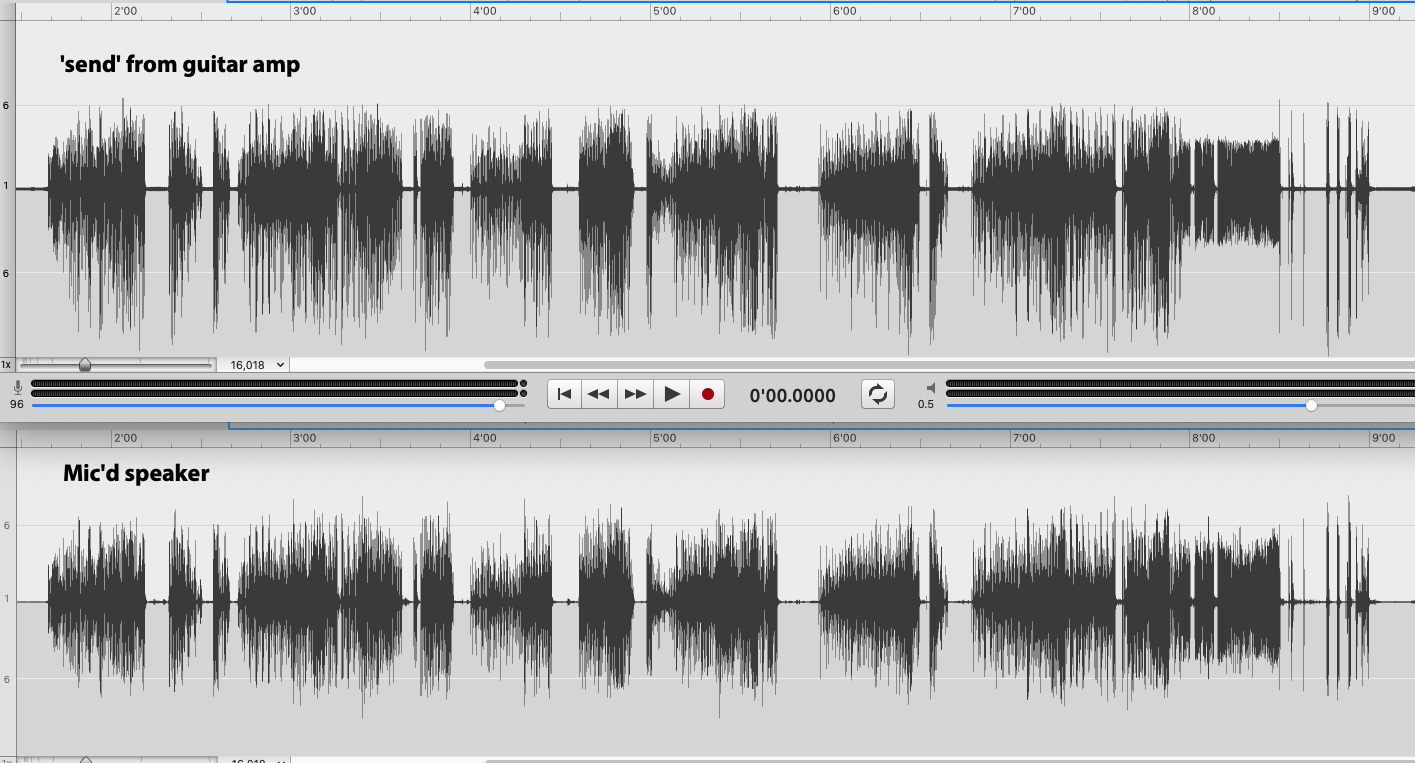Please explain to me what the difference is between above and below the vertical centerline of the amplitude meter in the attached screen capture. Also, why do I get a difference when I am recording the signal directly from the ‘send’ port of the guitar amp, But no difference when I’m recording the amp using a mic. Do I need to worry about the difference? Is there a way to correct just the bottom half of the signal? (NOTE: The section where the top and bottom are the same is when the guitarist is playing lead. The rest is when he is strumming) Thanks.

Asymmetrical waves are normal from some instruments (even some voices). If you strum-up instead of down it might reverse (the first movement from the string is the strongest).
High-pass filtering can sometimes even-out the waves and there is some filtering by the speaker (and amplifier electronics) so that would be my guess.
And if you drive the amp into distortion/saturation that will also even-out the positive & negative peaks but I don’t see that, since some peaks are higher than others.
In a “full mix” with other instruments & vocals, etc., this kind of thing will be “hidden in the mix”. And in professional productions there is usually lots of compression & limiting which will limit (so even-out) both the positive & negative peaks.
Vertical Amplitude Meter
BTW - That’s the “waveform” (a graphical representation of the waveform), not a “meter”.
Basically, on positive phase (above center line) the speaker should “push” air forward, and in negative phase (below center line), the speaker should move backwards. Ideally there would be a perfect match between the speaker’s membrane position, and the position of the wave.